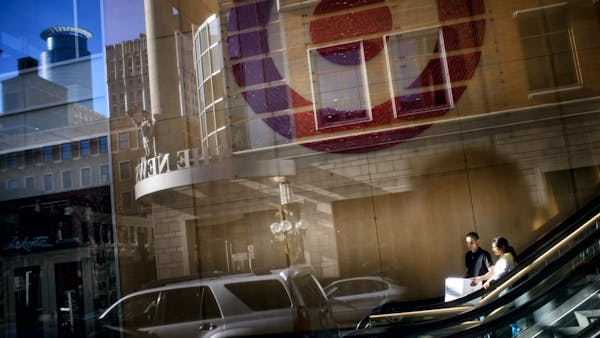The layoffs at Target Corp. are the most dramatic and painful part of CEO Brian Cornell's plan to boost profits in the next five years, but they're not the most potent financial move the company plans.
A program Target's senior leaders laid out last week calls for stock buybacks to deliver a bigger punch to the company's shareholder return than cost cuts and other operational changes will.
Jettisoning 1,700 workers at the retailer's Minneapolis corporate offices, along with not filling 1,400 other jobs and taking other cost-cutting measures, will help Target save about $500 million this year and another $1.5 billion next year.
But at a meeting with big investors and investment analysts in New York last week, Target executives surprised the audience with the size of the stock buybacks they plan: $2 billion this year and $3 billion each of the next four years.
For next year, that means Target will spend more on buybacks than analysts think it will make in net profit.
Reducing the number of shares available to investors tends to lift the value of shares still in the market. It also boosts the per-share profit calculation, an effect that can grow more pronounced over years.
Target's earnings per share in 2019 could nearly double to $7 from the $3.83 it recorded last year and $4.65 expected this year, according to an estimate by Simeon Gutman, analyst at Morgan Stanley. Its net earnings are likely to grow by a much lower 35 percent to 40 percent in the same period.
"Among the newest things that came at the meeting was the fact the buybacks would be increased at an amount much greater than the market expected," Gutman said in an interview Tuesday.
Companies benefit from buybacks, though in varying amounts. Target is relying on buybacks for about 60 percent of the gains it expects in the next five years.
"You don't normally see it this exaggerated where the buybacks carry the bulk of the earnings growth weight versus the core operations," Gutman said.
Target executives may have been taking a conservative approach in laying out the amount of future gains they can get from cost-cutting and other operational steps, he noted.
That said, despite Target's ballyhooed troubles in Canada and with the data breach, the company is healthier than many other retailers and may have less potential upside to find in cost-cutting and other structural changes.
Target's $14 billion buyback plan through 2019 is larger than a $10 billion share repurchase program it began in 2007 and ended in 2012. The company's board approved $5 billion in new buybacks in early 2012, but that effort was halted in 2013.
As its new buyback effort kicks in, Target again joins the sizable number of American companies to rely on the financial maneuver, which has drawn criticism despite its uplifting effect on corporate results and stock values.
Josh Mason, a fellow at the Roosevelt Institute in New York who has written about the history of buybacks, said they first accelerated in the 1980s and even more in the last decade. This paralleled a shift in corporate thinking that managers should place shareholders' interests above those of employees and customers, he said.
"It's the natural effect of the shareholders' revolution," Mason said. "People who own stock want to see money in their pockets now."
Evan Ramstad • 612-673-4241
